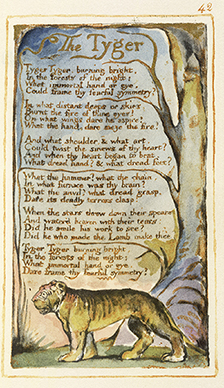Remember the coloring books you scribbled in as a kid? Have you ever found yourself wishing you had a grown-up version? Adult coloring books have taken the publishing world by storm, and this blockbuster niche is only predicted to keep growing. This season, enticing titles abound, from world-renowned artists and illustrators, titles that welcome you to color in scenes from your favorite literary worlds and more. Sharpen those long-forgotten colored pencils, pick up a fresh pack of markers and get reacquainted with this fun and relaxing activity.
GET LOST AT SEA
Artist Johanna Basford is one of the pioneers of the adult coloring book and has published two worldwide best-selling collections, but her newest is almost as good as finding sunken treasure. The intricate pen-and-ink illustrations of Lost Ocean feature curious sea creatures, exotic fish, shipwrecks, coral reefs and more. Tap into your inner Jacques Cousteau and get coloring!

Illustration from Lost Ocean by Johanna Basford. Excerpted with permission from Penguin Books, a division of Penguin Random House LLC. Copyright 2015, Johanna Basford.
EVERY LITTLE THING COLORING BOOK
Those who are especially enchanted by patterns found on textiles and wallpapers will delight in Payton Cosell Turner's Every Little Thing. These playful designs feature woodland creatures alongside irreverent pieces of pop-culture from the 1980s like boom boxes, burgers and Trapper Keepers. This collection is sure to inspire the use of bright and playful color combinations, and the finished products will be welcome additions to any adult's fridge.
A COLORFUL, WIZARDING WORLD
Listen up, Harry Potter fans! Now you can have a hand a making the scenes inside this beloved series come alive with The Harry Potter Coloring Book. Coloring pages feature the grounds of Hogwarts, Snape sitting (and brooding) at his desk, Harry and the gang getting into trouble and so much more. This coloring book is especially perfect for adults and kids to share and color in together.

Illustration from the Harry Potter Coloring Book. HARRY POTTER characters, names and related indicia are © & ™ Warner Bros. Entertainment Inc. Harry Potter Publishing Rights © JKR. (s15)
THE HIGHLANDS COME ALIVE
If you're looking to take your pencils to a different kind of literary landscape, check out The Official Outlander Coloring Book. Inspired by scenes from Diana Gabaldon's beloved time-traveling romance series, this book features excerpts from her novels juxtaposed with the images or scenes being described.
OUTSIDE THE LINES, TOO
Sometimes a work of art pulls us in, and we long for a more hands-on way of engaging with it. Souris Hong has just the book for this exact kind of art-lover with Outside the Lines, Too. This collection features pages of art from the Eames Office, Kevin Lyons, Audrey Kawasaki, street artists, photographers, graphic designers and more. If you crave stylistic variation in the pages you color, Hong's collection will deliver while introducting you to a wide range of artists from around the world.

“Shilton's Fleas” by MISTER PHIL. From Outside the Lines, Too by Souris Hong, published September 1, 2015 by Tarcher Perigee, an imprint of Penguin Publishing Group, a division of Penguin Random House LLC. Copyright 2015, Souris Hong.

































